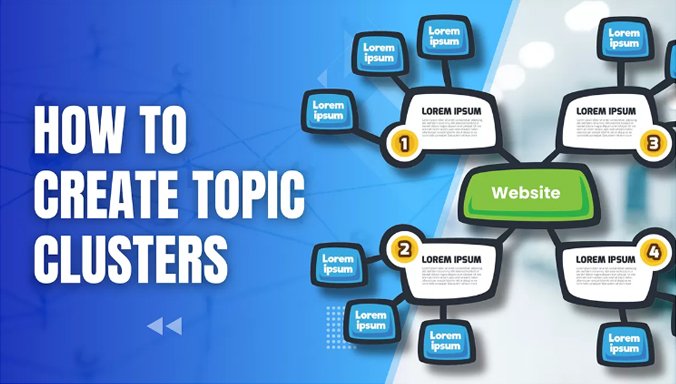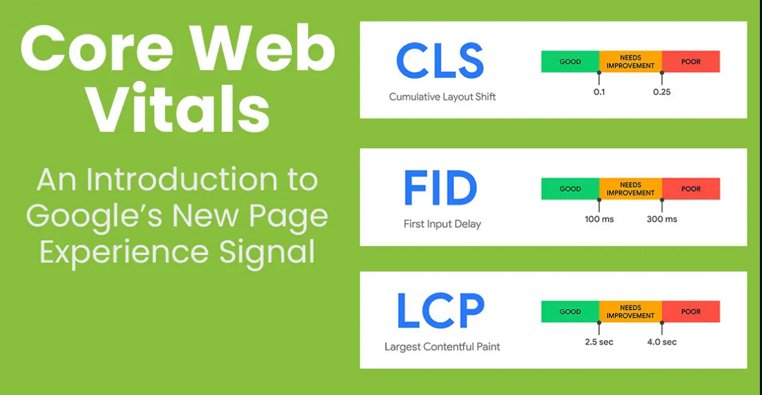Google continually updates its algorithm throughout the year, meaning last year’s—or even last month’s—SEO tactics might not be as effective today.
If you’ve noticed a decline in your organic traffic, it’s probably due to recent changes in how Google evaluates content, which can significantly impact search engine rankings.
Fortunately, we’ve compiled 16 practical SEO strategies to enhance your organic visibility in search engines—ranging from fundamental to advanced techniques.
AI-Powered Tools for Content Creation
In 2023 and beyond, leveraging AI for content creation is set to become a cornerstone of effective SEO strategies.
AI tools can generate a wide range of content types, including articles, blogs, landing pages, email and ad copy (for platforms like Facebook Ads and Google Ads), video descriptions (for YouTube), product descriptions, job listings, and more.
AI content writing utilizes advanced technologies such as GPT-3 (Generative Pre-trained Transformer 3), a sophisticated autoregressive language model. This model employs deep learning to produce human-like text tailored to your target audience.
This SEO approach is gaining popularity due to the increasing accuracy of AI writing assistants, which can save significant time and resources.
Several AI writing tools are available to assist you, each specializing in different types of content:
- Jasper: Ideal for crafting long-form content such as blog posts or detailed landing pages.
- Copysmith: Designed for e-commerce needs, including product descriptions, and offers seamless integration with Shopify.
- Rytr: Focuses on marketing-related content like YouTube descriptions and job postings.
- Anyword AI: Specializes in copywriting tasks such as ad copy creation.
Additionally, tools like ChatGPT are invaluable for generating conversational content, interactive dialogues, and creative text. ChatGPT, with plugins like VoxScript, can even extract transcripts from YouTube videos to create engaging blog posts.
For example, using Jasper to write a blog post involves:
- Suggesting relevant topics based on your audience's interests.
- Creating a concise outline and draft.
- Generating multiple headline options.
- Providing structured lists for listicle formats.
- Writing introductory and concluding paragraphs.
- Crafting effective meta descriptions.
Note: It's essential to review the final draft using tools like Copyscape and AI plagiarism detectors such as GPTZero or Content at Scale. This ensures originality and avoids unintentional plagiarism, which could negatively impact your search engine performance. Additionally, always revise content for accuracy and avoid keyword stuffing to maintain SEO integrity.
App Store Optimization (ASO) for Mobile SEO
With the continued rise in mobile traffic, optimizing for mobile devices and app stores remains crucial to enhancing your app's visibility and downloads.

App Store Optimization (ASO) is an essential SEO strategy focused on improving an app's ranking in app store search results. The primary goal of ASO is to increase visibility, attract more downloads on mobile devices, and ultimately boost revenue.
Similar to how SEO enhances website visibility in search engines, ASO ensures your app stands out in Apple’s App Store or Google Play's search results.
Key ASO Strategies:
- Optimize App Metadata:
- Title: Include relevant keywords in your app's title to improve discoverability.
- Description: Craft an informative and compelling description that incorporates keywords naturally.
- Keywords: Use relevant keywords in the designated field but avoid keyword stuffing.
- Screenshots: Select high-quality images that accurately showcase your app's features and benefits.
- Improve App Ratings and Reviews:
- Encourage users to leave positive reviews by providing exceptional user experiences.
- Respond promptly and positively to negative reviews to demonstrate responsiveness and commitment to user satisfaction.
ASO Optimization Tips:
- Keyword-Rich Titles: Incorporate relevant keywords in your app's title to enhance search visibility.
- Keyword-Rich Descriptions: Utilize keywords naturally in the app description to attract both search engines and users.
- Avoid Keyword Stuffing: While keywords are essential, ensure they are used judiciously and remain contextually relevant.
- Optimize App Screenshots: Choose high-resolution images that accurately represent your app’s functionalities and appeal to potential users.
Optimizing your app for ASO not only improves its visibility in app stores but also enhances its attractiveness to potential users, driving more downloads and increasing overall engagement.
Optimize Your Content Effectively
Experienced SEO professionals understand the strategic impact of content optimization on increasing organic traffic. Content optimization involves refining on-page meta tags, such as:

- Incorporating primary and secondary keywords at appropriate densities.
- Ensuring an optimal word count that aligns with search intent and competition.
- Maintaining excellent readability to enhance user experience.
- Crafting compelling meta titles and descriptions to improve click-through rates (CTR).
Four Ways to Implement Content Optimization:
- Determine Word Counts and Keyword Densities:
- Tailor your content length and keyword density based on search queries and top-ranking pages. Some queries require concise answers featured in snippets, while others demand comprehensive articles exceeding 3,000 words. Adapt your approach to fit the context rather than using a one-size-fits-all strategy.
- Test Meta Titles for CTR Optimization:
- Meta titles and descriptions are critical on-site elements for page optimization. A well-crafted meta description can significantly boost CTR, leading to improved rankings and increased traffic.
- Refresh Pages with Declining Traffic:
- Over time, older content may experience a decline in traffic and rankings due to factors like content saturation, evolving search algorithms, or competitor updates. Refreshing such content—updating information, adding relevant details, or improving multimedia elements—can revive its visibility and performance without starting anew.
- Address Related Questions to Align with Search Intent:
- Utilize tools like “People Also Ask” and “Related Searches” in SERPs to identify and address user search intent effectively. By answering related questions comprehensively within your content, you can potentially enhance your page’s relevance and CTR.
Implementing these content optimization strategies can not only improve the visibility and relevance of your existing pages but also enhance their performance in search engine results pages (SERPs), driving higher organic traffic and engagement.
Achieve Superior Page Experience with Core Web Vitals (CWV)
In the realm of modern SEO trends influenced by advancements like BERT and MUM, Google has prioritized enhancing user interaction through Core Web Vitals (CWV).
While traditional elements like links and tags remain crucial, Google now emphasizes broader aspects that enrich the overall page experience.
Google defines page experience as a composite of signals that gauge user satisfaction beyond mere content relevance.

Understanding Core Web Vitals
Core Web Vitals encapsulate key metrics that assess a page's performance from a user-centric viewpoint:
- Largest Contentful Paint (LCP): Measures loading speed, with Google recommending LCP under 2.5 seconds after page load initiation.
- First Input Delay (FID): Evaluates interactivity responsiveness, with an ideal FID target of less than 100 milliseconds.
- Cumulative Layout Shift (CLS): Assesses visual stability, aiming for a CLS score below 0.1 to minimize unexpected layout shifts.
These metrics collectively reflect how users perceive and interact with a web page, influencing its ranking in search results.
Implementing strategies to optimize Core Web Vitals ensures your pages load quickly, respond swiftly to user actions, and maintain visual stability—ultimately enhancing user satisfaction and improving SEO performance.
Enhancing Page Experience: Essential Metrics and Steps
In addition to Core Web Vitals, optimizing page experience involves addressing three key metrics:
- Mobile Friendliness:
- Ensure your website is responsive and user-friendly on mobile devices. Mobile-friendly design enhances accessibility and positively impacts SEO rankings. Google prioritizes mobile-optimized sites to deliver a seamless experience across various devices and screen sizes.
- HTTPS Protocol:
- Secure your website with HTTPS. Implementing HTTPS encrypts data transmitted between users' browsers and your site, ensuring privacy and data integrity. Sites using HTTPS receive a ranking boost from Google and build trust with users by displaying a secure connection status in browsers.
- Avoiding Intrusive Interstitials:
- Minimize or eliminate intrusive interstitials that disrupt user experience. While some pop-ups, like email subscription forms, are acceptable, intrusive interstitials that open new tabs or cover main content negatively impact user satisfaction and SEO.
Steps to Improve Page Experience
Here are actionable steps to enhance your page experience:
- Use PageSpeed Insights:
- Evaluate your website's performance against Core Web Vitals using PageSpeed Insights. Review Google's recommendations to address any identified issues that impact loading speed, interactivity, and visual stability.
- Test My Site:
- Measure your site's responsiveness with Test My Site. Ensure your website loads quickly and functions smoothly on mobile devices, improving user engagement and SEO performance.
- Boosting Page Speed:
- Optimize page speed to enhance organic performance and increase conversions. Studies show that faster page speeds correlate with higher user satisfaction and improved conversion rates.
- Ways to boost page speed include:
- Minifying unnecessary code.
- Deferring JavaScript loading.
- Reducing server response time.
- Choosing the right hosting solution.
- Enabling browser caching and compression.
- Compressing images to reduce page size by 30-40%.
Once you've optimized page speed, ensure your website meets the criteria for mobile-friendliness, HTTPS security, and minimal intrusive interstitials. This holistic approach not only improves SEO rankings but also enhances user experience and drives higher conversion rates.
Enhance Dwell Time to Boost SEO Rankings
Google has emphasized dwell time as a crucial metric within its Core Web Vitals, highlighting its significance in user engagement and page ranking.
Understanding Dwell Time
Dwell time refers to the duration visitors spend on a page after clicking a search engine results page (SERP) link before returning to search results. Unlike bounce rate, which indicates immediate exits, dwell time reflects user interaction and engagement with content.
A longer dwell time signals to Google that your page offers valuable information, potentially leading to improved rankings. Google interprets extended dwell times as a positive indicator of content relevance and user satisfaction.
Techniques to Improve Dwell Time and User Experience
A) Make Your Posts Easy to Read
To enhance organic rankings, focus on optimizing content readability:
- Quality Content: Ensure your content is well-researched, engaging, and free of grammatical errors.
- Short Paragraphs: Use paragraphs consisting of 3-4 sentences to improve readability. Intersperse with one-sentence paragraphs sparingly for emphasis.
- Varied Sentence Lengths: Mix long and short sentences to maintain reader interest and clarity.
- Sub-headers: Incorporate descriptive sub-headers to aid content scanning and facilitate understanding.
- Bullet Points: Use bullet points for clarity when presenting lists of data, statistics, or examples.
- Whitespace: Break up text with ample whitespace and relevant media such as images, videos, and graphs to enhance visual appeal and comprehension.
- Images and Screenshots: Include visuals to illustrate key points and enhance content depth and engagement.
B) Use the Inverted Pyramid Writing Style
Adopt the inverted pyramid style of writing to cater to online reader behavior:
- Immediate Value: Place the most crucial information at the beginning of your article to capture reader interest promptly.
- Progressive Detail: Provide additional details and less critical information as the article progresses, catering to both scanners and deep readers.
Additional Considerations
Continue optimizing dwell time and user experience by focusing on these additional points:
- Engaging Call-to-Actions: Encourage interaction through clear and compelling calls-to-action (CTAs) that guide users through your content.
- Interactive Elements: Incorporate interactive elements such as quizzes, polls, or embedded videos to increase engagement and extend dwell time.
- Regular Content Updates: Keep your content fresh and relevant by updating information, revising outdated sections, and adding new insights.
- Community Engagement: Foster community engagement through comments, forums, or social media interactions to build a loyal audience and extend visit durations.
Implementing these strategies will not only improve dwell time but also enhance overall user experience and SEO performance, driving increased visibility and engagement on your website.
Enhancing SEO with Semantic Search and Topic Clusters
Google's evolving approach aims to understand user intent beyond keywords alone, emphasizing context and relevance in search results. Here's how you can leverage semantic search and topic clusters to enhance your SEO strategy:
Understanding Semantic Search
Semantic search focuses on understanding the meaning behind user queries, rather than just matching keywords. It considers context, synonyms, and user intent to deliver more accurate search results.
A) Know Your Target Audience for Semantic Search
Understanding your audience demographics and interests is crucial for effective content creation and SEO:
- Create Detailed Buyer Personas: Develop detailed profiles of your target audience based on demographics, interests, and behavior. This helps tailor content to specific user needs and preferences.
- Example Scenario: For instance, a search for "Android" could be interpreted differently by different user groups, such as mobile users seeking technical support, Star Wars enthusiasts interested in droids, or robotics enthusiasts researching Androids. Tailor your content strategy to address the specific interests of your target audience segments.
B) Organize Content into Topic Clusters
Rather than focusing solely on individual keywords, organize your content into cohesive topic clusters:
- HubSpot's Topic Cluster Model: Group related content into clusters centered around a core topic or pillar page. Linking content within these clusters helps establish authority and relevance on specific themes.
- Benefits of Topic Clusters: Enhance SEO by interlinking related content pieces, improving user navigation and engagement. This strategy signals to search engines the depth and breadth of your expertise on specific topics.
Additional Considerations
Continue optimizing your SEO strategy with these additional tips:
C) Optimize Content for Long-Tail Keywords:
- Long-tail keywords reflect specific user queries and often have lower competition. Incorporate these naturally into your content to capture niche audiences and improve search visibility.
D) Use Structured Data Markup:
- Implement structured data markup to help search engines understand and index your content better. This can enhance visibility in rich snippets and other search result features.
E) Monitor and Adapt to Search Trends:
- Stay updated with evolving search trends and algorithm changes. Regularly review and adjust your SEO strategy to align with current best practices and user expectations.
It seems like you're pasting a lot of detailed information! Let's continue with optimizing your headings and beyond:
Optimize Your Headings (Not Just Your Title Tags!)
In addition to optimizing your title tags, it’s crucial to pay attention to your headings, especially your H1 tags. Here’s why:
- Significance of H1 Tags: Google often uses the text within your H1 tag as a primary descriptor for your page in search results. While Google may rewrite your title tags, having a clear and relevant H1 helps maintain consistency and clarity.
- SEO Best Practices for Headings:
- H1 Tag: Ensure your H1 tag accurately summarizes the main topic of the page and includes relevant keywords.
- Subheadings (H2, H3, etc.): Use subheadings to break down your content into sections. This improves readability and helps search engines understand the structure of your content.
- Keyword Placement: Incorporate primary and semantic keywords naturally into your headings where appropriate. This reinforces the relevance of your content to search queries without keyword stuffing.
- Avoid Common Mistakes:
- Overuse of H1: Each page should have only one H1 tag, representing the main topic of the page. Subsequent headings (H2, H3, etc.) should follow in a hierarchical order.
- Missing H1 or Misuse: Some CMS platforms automatically generate H1 tags based on the page title. Ensure that these automatically generated H1 tags are optimized and reflect the content appropriately.
- Optimization Tips:
- Craft headings that accurately describe the content and engage users.
- Use headings to outline the structure of your content logically.
- Monitor and update headings periodically to reflect changes in content focus or keyword strategy.
By optimizing your headings alongside your title tags, you enhance both user experience and SEO performance, making your content more accessible and relevant to search engines and users alike.
Implement Content Updates Strategically
Updating your content strategically can significantly improve its performance and relevance over time. Here’s how:
- Identify Content Gaps: Regularly audit your existing content to identify gaps or outdated information. Content that no longer serves its purpose can be updated or consolidated.
- Refresh Evergreen Content: Evergreen content, which remains relevant over time, can benefit from periodic updates. This keeps it competitive in search results and maintains its value to users.
- Add New Information: Incorporate new insights, data, or developments in your field to ensure your content remains current and informative.
- Improve Visuals and Multimedia: Enhance your content with high-quality images, infographics, videos, or interactive elements to increase engagement and dwell time.
- Promote Updated Content: After updating, promote your refreshed content through social media, newsletters, and other channels to attract new readers and increase visibility.
- Monitor Performance: Track the impact of content updates on metrics like traffic, engagement, and keyword rankings. Adjust strategies based on performance data to optimize future updates.
By implementing these strategies, you can maintain the relevance and effectiveness of your content, driving sustained organic traffic and improving your site’s overall SEO performance.
In 2024, navigating the complexities of SEO requires a strategic blend of innovation and timeless best practices. As Google's algorithms evolve, so too must our approaches to enhancing organic traffic. By leveraging AI-powered tools for content creation, optimizing mobile SEO with ASO techniques, and focusing on superior page experiences through Core Web Vitals, we lay a robust foundation for success.
Enhancing dwell time and embracing semantic search further solidifies our content's relevance and engagement. Effective heading optimization and strategic content updates ensure our efforts remain aligned with user intent and search engine expectations.
As we continue refining these 16 proven strategies, let's remember that SEO isn't just about rankings—it's about connecting with our audience authentically, delivering value, and staying ahead in a dynamic digital landscape.
By implementing these strategies thoughtfully and consistently, we empower our content to not only rank higher but also resonate deeper, driving sustained growth and visibility online. Here's to achieving new heights in organic traffic and staying agile in the ever-changing realm of SEO.
Top Website Designing Company in Delhi NCR



